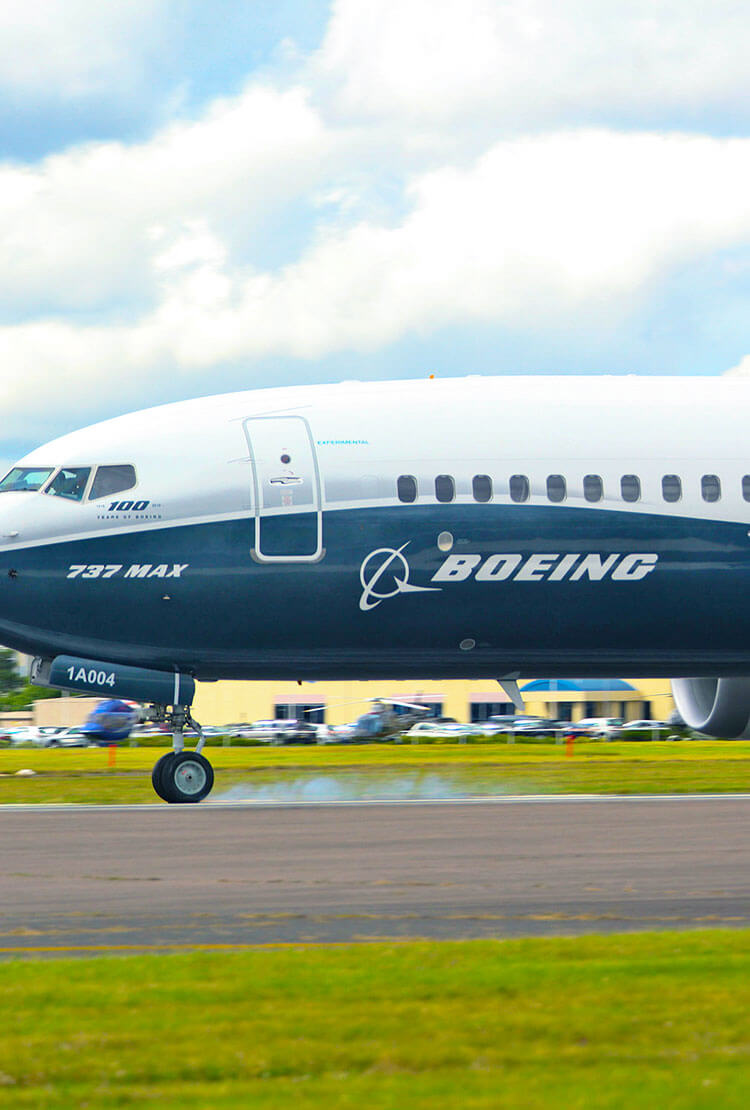When traveling by airplane, have you ever stopped to wonder if you’re flying on a Boeing 737 or a Boeing 757 — or what the difference is between them, anyway? To the untrained eye, modern airliners can look quite similar to one another, but if you’re curious about what makes each model different, read on to discover a few helpful tricks for telling commercial airplane models apart.
How to See the Type of Plane When Booking

Most travelers choose flights based on price and convenience, but some seasoned travelers may be looking to fly on a particular model, perhaps because one offers a more comfortable seating layout or a more modern design that might help reduce jet lag. And with recent news surrounding the Boeing 737 MAX, you might be wondering if you can avoid flying on a certain plane type altogether.
Fortunately, major U.S. airlines make it easy to tell what type of aircraft is scheduled to operate each flight. (Word of caution: Aircraft assignments are always subject to change, and usually airlines won’t let you change or refund your flight if that happens.)
When booking on United Airlines, for example, you’ll find the aircraft type next to the flight number, directly under the departure and arrival times to the far left of the page. American Airlines also displays aircraft type under the flight times, right next to the flight number. On Delta Air Lines, you’ll want to click on the hyperlink marked “details” or on the flight numbers, which will introduce a pop-up that has more detailed aircraft information (and also a helpful illustration). Each of these airlines also offers more details on its full fleet of aircraft on their respective websites.
While the big three global U.S. carriers operate many different fleet types, since its first flight in 1971, low-cost giant Southwest Airlines has only flown the Boeing 737. That said, Southwest operates a few different variants — both the older-generation 737-700 and 737-800 and the newer 737-8 MAX models. The airline displays this information during the booking process when you click on the flight number on the flight results page.
What Are the Most Popular Narrow-Body Aircraft Types?
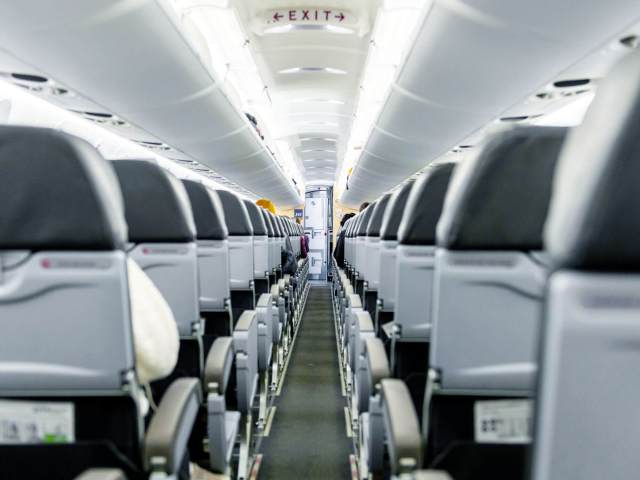
A narrow-body plane has only one center aisle down the aircraft with two to three passenger seats on each side in the main cabin. Wide-body aircraft, on the other hand, have two passenger aisles, with a set of seats along each window and one in the center section between the aisles. If you’re taking a domestic flight anytime soon, chances are high that you’ll be on an Airbus A320 family aircraft or a Boeing 737.
Boeing Models
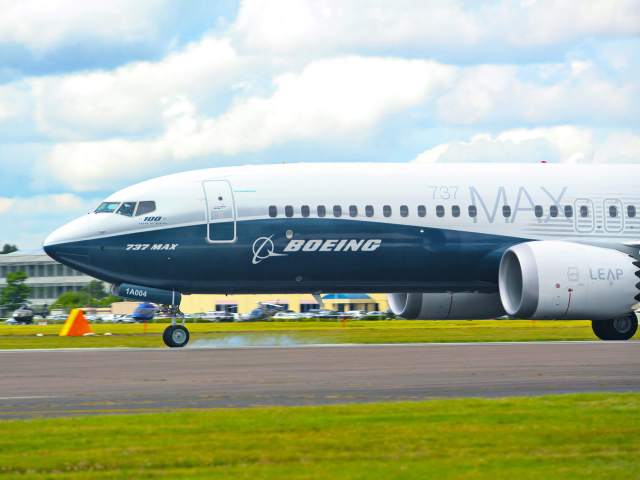
Since the type’s first flight in 1967, more than 15,000 Boeing 737s have been built — more than any other aircraft in history. Today, more than 11,000 Boeing 737s remain in service, and on average, there are two of them landing or departing every five seconds at any given time around the world.
Most older-generation Boeing 737s (including the 737-100, -200, -300, -400, and -500) are no longer flying in the United States. The most common type in service today is Boeing’s “Next Generation” 737, which was introduced in 1997 with refreshed technology. These include the 737-700, 737-800, and 737-900ER (Extended Range) models. In 2017, Boeing unveiled another updated version of the 737 called the 737 MAX with further technology and efficiency updates. As of mid-2024, the 737-8 and 737-9 are flying, while the 737-7 and 737-10 are awaiting certification.
American, Delta, and United each operate several hundred Boeing 737 aircraft. Like Southwest, Alaska’s entire mainline fleet is composed of 737s (the carrier also operates a fleet of regional jets). As of mid-2024, Alaska, American, Southwest, and United also operate dozens of 737 MAXes.
As for other Boeing models, the Boeing 757, first flown in the 1980s, was once a domestic workhouse, but many have been retired in recent years. However, United and Delta still operate large fleets of these aircraft. Consisting of the 757-200 and the longer 757-300 variant, they typically seat between 180 and 230 passengers, and are the longest narrow-body aircraft flying today. The smallest Boeing jet, the 110-seater Boeing 717, is also in service with Delta and Hawaiian Airlines.
Airbus Models
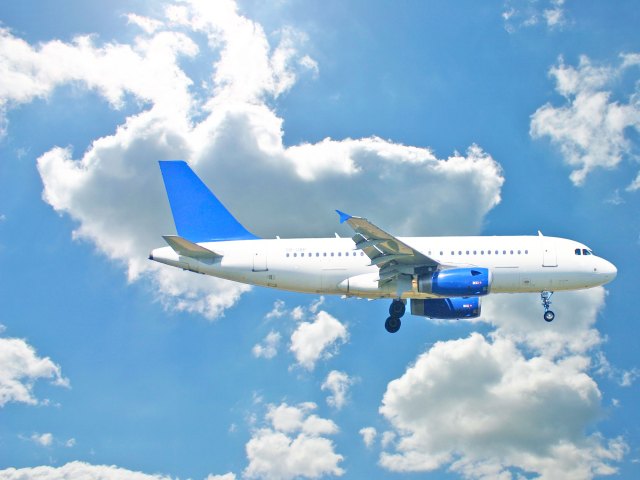
The Airbus A320 family has also proven wildly popular. The European manufacturer introduced the type in 1987 with “fly-by-wire” technology, making it the first modern jetliner with a computer-controlled cockpit. Today, more than 10,000 Airbus A320 family aircraft remain in service, including the Airbus A318, A319, A320, and A321 variants (ranked in size order).
Airbus has two generations of the A320 — the original “CEO” (current engine option) and the newer “NEO” (new engine option), which first flew in 2014 with more fuel-efficient engines and other design updates. You can find Airbus models on many major airlines. U.S. airlines such as Frontier, JetBlue, and Spirit, and Allegiant only operate A320-family aircraft, while American, United, and Delta each have large fleets of the type.
One of the newest aircraft types is the Airbus A220, formerly called the CS100, which was introduced in 2013. Airlines such as Air Canada, Delta, and JetBlue are major operators of this model.
Regional Jets
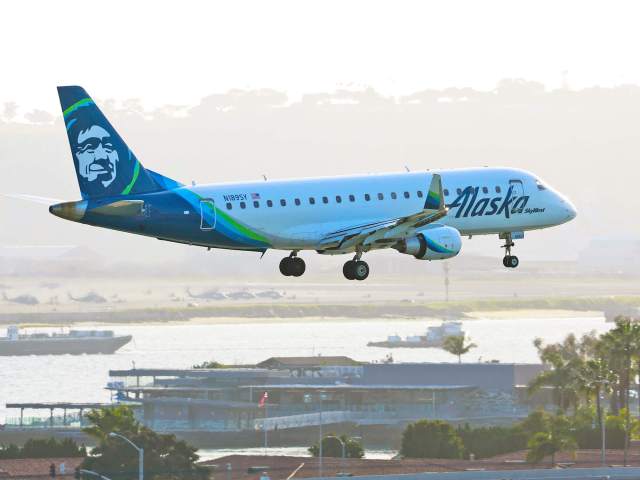
You may also likely find yourself on a “regional” jet. Compared to “mainline” jets like the Boeing 737, these aircraft typically seat between 50 and 100 passengers and operate in and out of smaller airports under separate branding (i.e. Delta Connection or United Express). The two largest manufacturers of these smaller jets are Bombardier and Embraer. Bombardier makes the Canadair Regional Jet series, including the CRJ-200, CRJ-700, and CRJ-900 models. Embraer makes the E-jet family — consisting of the E-170, E-175, E-190, and E-195 — and also produces the smaller ERJ-145.
What About Wide-Body Aircraft?
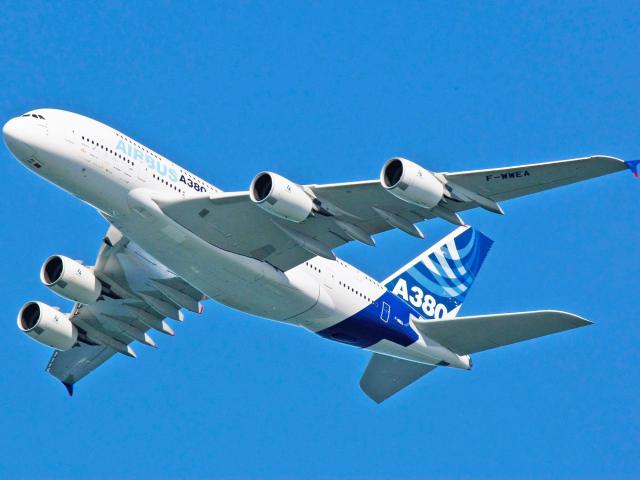
If you’re traveling overseas on a long-haul flight, there’s a good chance you’ll be on a wide-body jet. The Boeing widebody models flying today include the double-decker Boeing 747 (aka the “Queen of the Skies”), the 767, the 777, and the 787. The Boeing 787 is the carrier’s latest-generation type, built primarily with lighter-weight composite materials that make the aircraft more fuel-efficient.
Airbus also has several wide-body models in operation, including the A330, the A340, the A350, and the A380. The A330 and A340 have a similar fuselage, with the latter having four engines instead of two. The A350 is the manufacturer’s newest long-range type, built to compete with Boeing’s 787, and includes the A350-900 and stretched A350-1000 version. Finally, the A380 is the world’s largest passenger jet, which can accommodate between 500 and 800 passengers with two full decks of seating. Sadly, production on the A380 ended in 2021 due to lack of orders.
Different Passenger Experiences

While most modern jetliners offer similar levels of passenger comfort, not all aircraft are created exactly equal. Notably, the A320’s fuselage is about seven inches wider than the 737. That may not seem like much, but the extra few inches of width gives each economy class seat an extra inch of width on average, and the extra elbow room is noticeable in today’s otherwise cramped cabins.
As far as regional jets, many passengers prefer Embraer’s E-jets (such as the E-175) because the cabin is slightly taller than the Canadair Regional Jet (such as the CRJ-900). That leaves a little more head room, plus space for larger overhead bins. Both models offer two-by-two seating — meaning there’s no middle seat in coach.
Newer wide-body models, such as the Airbus A350 and Boeing 787, also offer improved passenger comfort. The use of carbon fiber materials in their construction increases cabin pressure and reduces humidity, which can ease the effects of jet lag compared with older types. The 787 also features updated passenger-friendly amenities such as extra-large dimmable windows. The A350, meanwhile, is slightly wider than the 787, which allows for slightly wider seats.
How to Identify Aircraft Visually

Ready to go one step further in your aviation knowledge? True pros can identify the exact aircraft model just by looking at one on the airport runway. There are a few key elements and subtle differences in each aircraft’s design to look out for.
Start with the number of engines. These days, the vast majority of aircraft are twin-engined, so if you see one with four engines it’ll be easier to identify off the bat. Even easier: Two widebody plane types feature a double deck, the Boeing 747 and the Airbus A380 jumbo jet. The 747’s top deck only extends for a small portion at the front of the fuselage, while the A380’s extends the entire length.
Other exterior details to keep an eye on include the shape of the tail fin, the shape of the nose, the layout of the cockpit windows, the landing gear, and the number and type of exit doors along the fuselage of the aircraft.
For example, the Boeing 737 has a noticeably pointier nose design than the rounded one found on the Airbus A320. The 737’s cockpit windows slant upwards and downwards at the bottom, while the A320’s are mostly level. The front part of the 737 tail also has a noticeable triangular protrusion at the base where it meets the fuselage, whereas the A320’s has a small, gentle curve at the base. Finally, the Airbus model sits higher off the ground than its Boeing competitor.
And what about between different variants of the same aircraft family? Start with the exit doors. Because the variants differ by passenger capacity, they usually have a different number of exits. For example, the 737-700 only has one small window emergency exit on each side over the wings on each side. The -800 is slightly larger and features two emergency exits over the wings. The -900 is the longest and features two small emergency exits over the wings and a larger door immediately aft of the wings, which can be plugged if airlines choose to configure the plane with fewer than the maximum number of seats.
The 737-9 MAX also features the optional larger exit door directly aft of the wing, similar to the 737-900ER. These can also be deactivated based on airline seating configuration. The plugged exit door made headlines in January 2024 when it detached from an Alaska Airlines 737-9 MAX shortly after takeoff, prompting the worldwide fleet to be grounded and inspected before it could safely return to service several weeks later.
More from our network
Daily Passport is part of Inbox Studio, which publishes content that uplifts, informs, and inspires.






